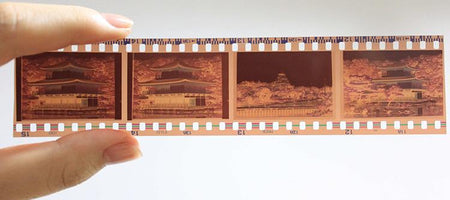Here at Southtree, we know a lot about all kinds of analog media formats. From photographs to tapes to films and audio, we know the ins and outs and we can digitize most everything. Some formats are much more well known than others, such as 35mm prints, VHS tapes, and 8mm film reels, and then there are more obscure formats. One of these more obscure formats is the VHS-C.
The VHS-C is essentially the baby version of the VHS tape - it is much smaller in size. It was first manufactured in 1982 by JVC of Japan and was designed to work with more compact VHS-C compatible camcorders. VHS-C tapes were mainly in competition with Video8 tapes, which were smaller than the VHS-C tapes but were not compatible with VHS recorders, which were the most popular home video systems on the market at the time.
VHS-C tapes could be played in VCR systems, but only with an adapter. The VHS-C tape could be inserted into the adapter, and the adapter would then be inserted into the VCR for playback. This way, VHS consumers did not need to buy a second VHS-C compatible recorder in order to play their VHS-C tapes.
The VHS-C run time was significantly shorter than Video8 tapes, 30 minutes compared to 60 minutes. However, the quality of the tapes was very similar. When Video8 produced the higher quality High8, JVC released the S-VHS-C as competition. The S-VHS-C tapes were very high quality yet also inexpensive, making them popular for the short time they were on the market.
The arrival of the MiniDV in 1995 quickly took over the home video market, and all taping formats became obsolete in a matter of years as digital recorders became the most widely used media recorders.
Overall, the VHS-C, along with other compact tape formats, had a short lifespan. The appeal of the VHS-C was its compact size. Those who desired smaller camcorders preferred VHS-C camcorders to the giant VHS camcorders. However, many consumers felt that the size difference didn’t justify purchasing a brand new camera and adapter. The full-size VHS tape and VCR remained very popular and widespread until the miniDV and other digital camcorders came onto the scene and replaced the tape format altogether. Now, VHS-C, VHS, Video8, Betamax, and all other tape formats are obsolete, but their contribution to technology was huge.
Did you have VHS-C tapes growing up? If so, try getting them digitized! Southtree can take your VHS-C tapes and transfer them to DVD, thumb drive, or digital download for a great price. Once you get your analog media digitized, you don’t have to worry about your tapes getting damaged or lost. Digitized media lasts forever and is easy to share with friends and family. Why wait? Try Southtree today.













